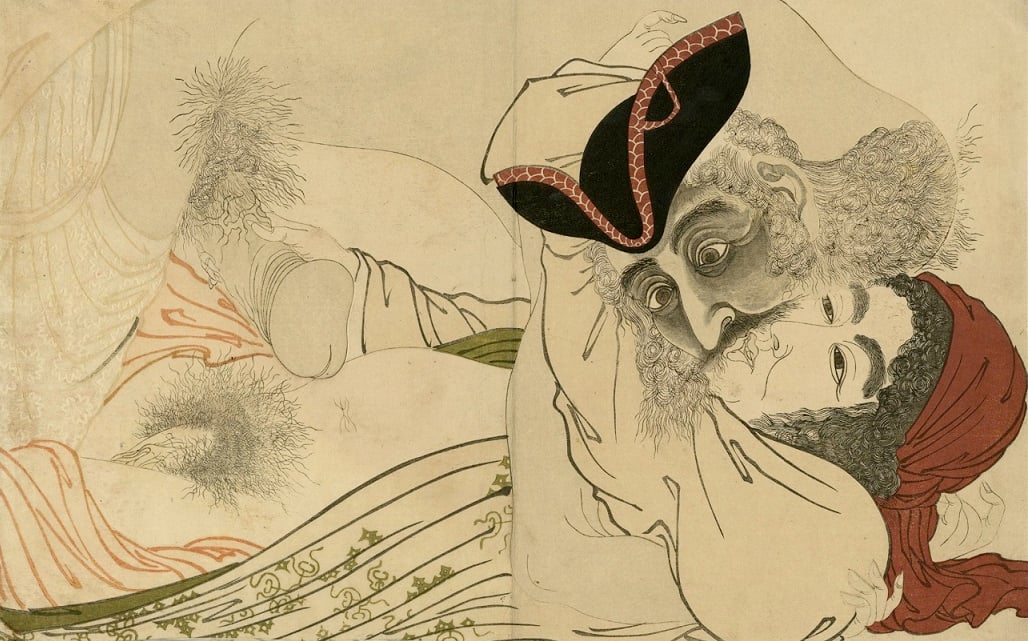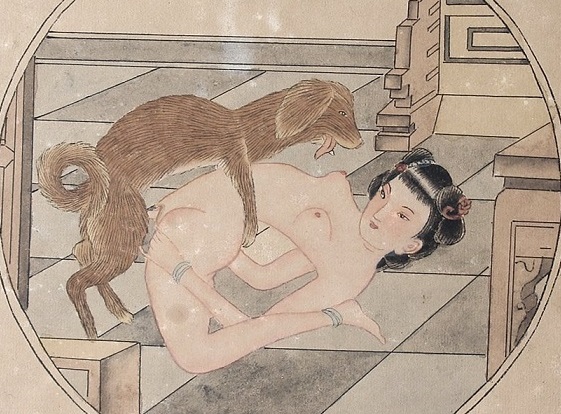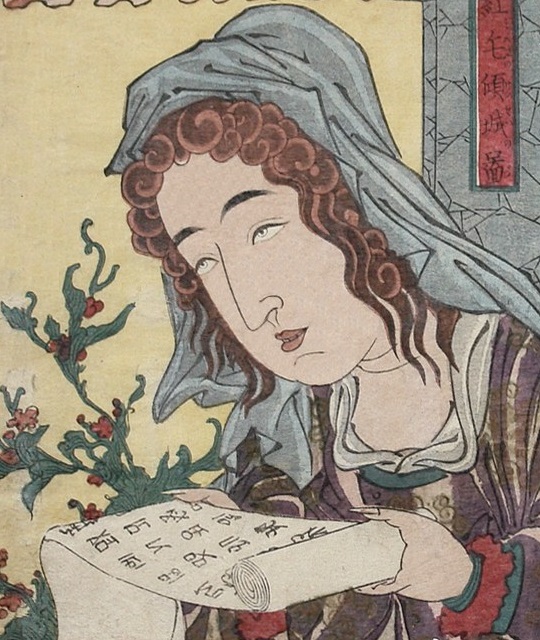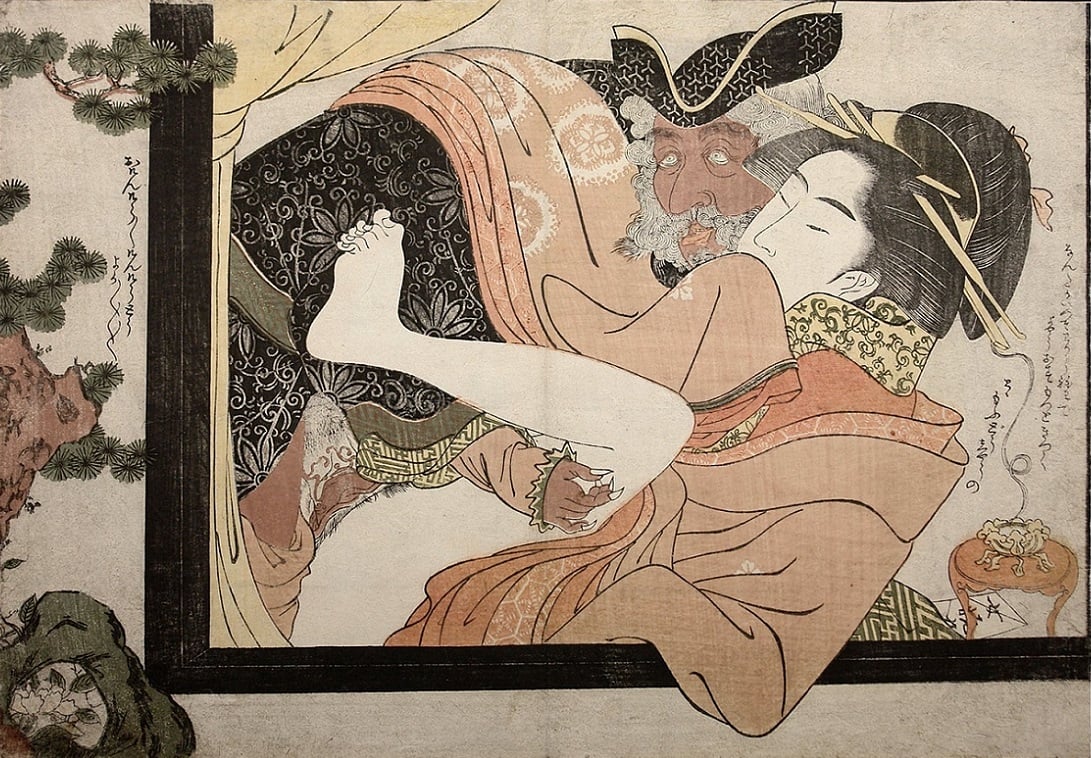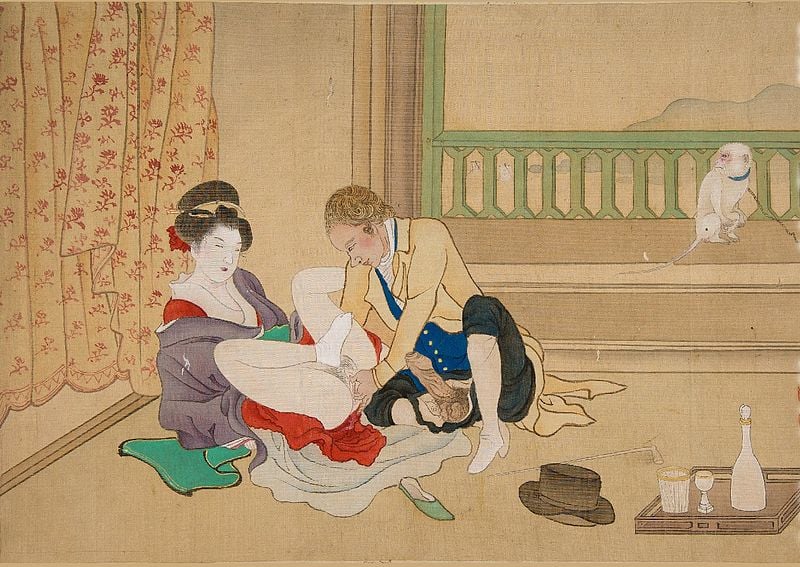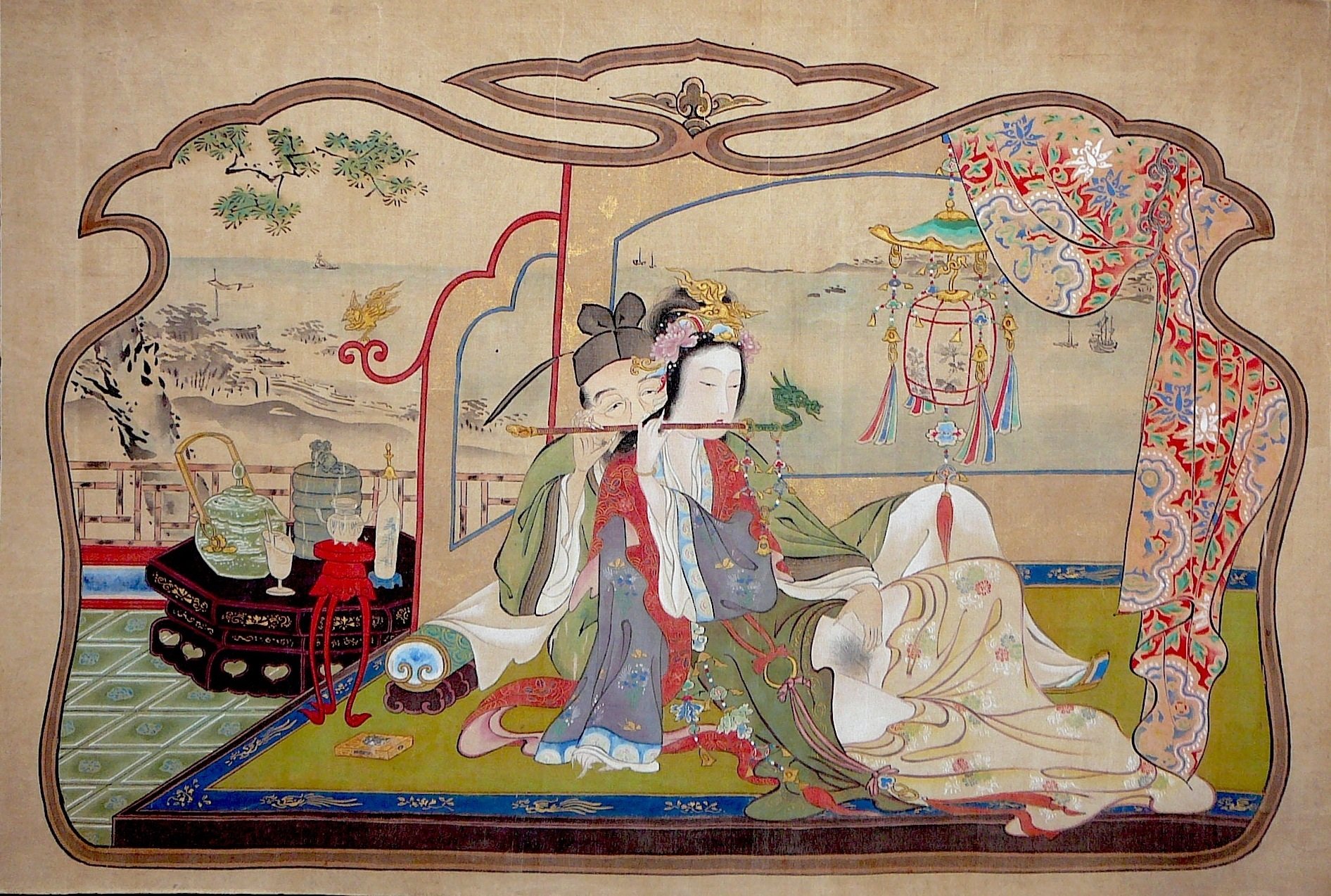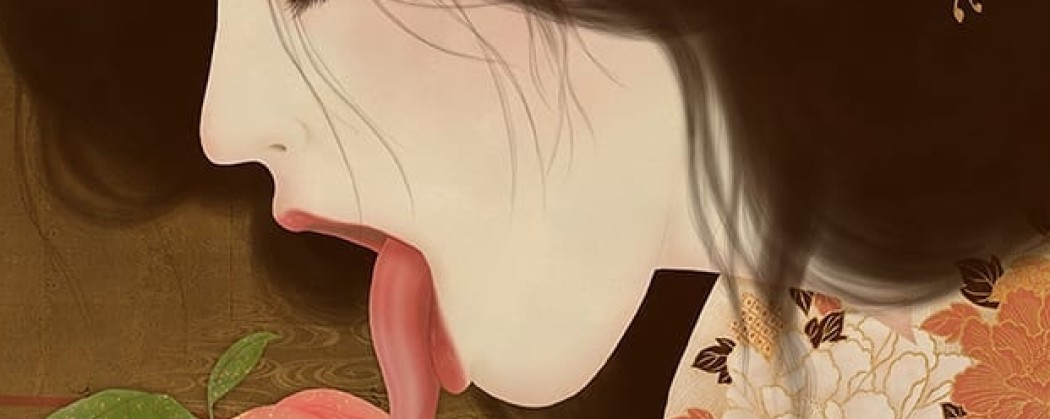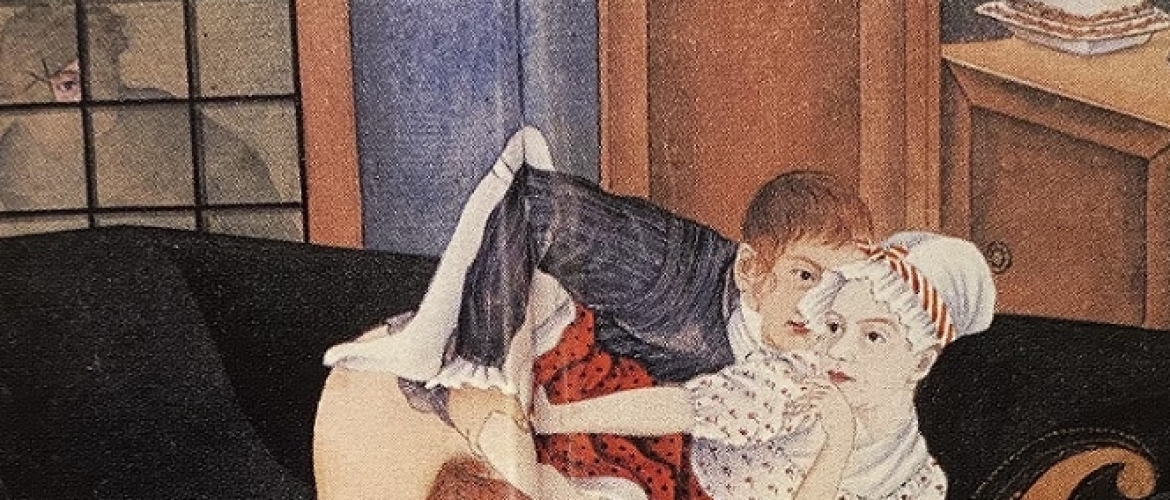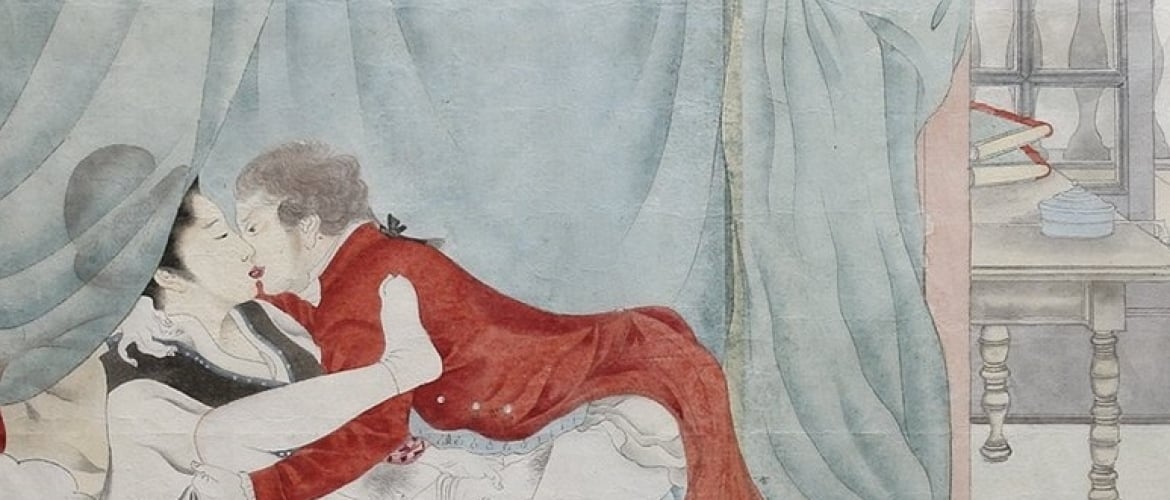
When the Dutch installed their trading post at the Nagasaki harbour in Deshima their number of staff was generally not large. The most important official was the “opperhoofd” or Chief. The figure portrayed in the erotic painting below could very well be the well-known VOC head Jan Cock Blomhoff (1779-1853).

Fig.1. Shunga painting of ‘Jan Cock Blomhoff (?) with a Japanese woman‘ (c.1820) by a contemporary of Kawahara Keiga (Sold)
Lady Killer
The Dutch male is portrayed (Fig.1.) here as a Casanova like figure acting as a seasoned ‘lady killer’. Their passionate love-making is accentuated by gentle touches (his hand around her neck, her directing his member and their tender kissing) are an indication that they are regular lovers.
Other striking details are the birdcage in the background, the hat on the ground and the haircut of the woman visible through the transparent mosquito-net.
Red-Headed Barbarians
The Nagasaki prints and paintings came in production from around 1750. This production continued for a century. Japanese travelers and merchants bought these woodcuts and paintings with depictions of ‘red-headed barbarians’ as a souvenir.
These prints and paintings represent the Japanese perception of the Dutch, who were permitted to stay as the only westerners for more than two centuries in a secluded Japan. Thus, in a special way a unique chapter in the history of the Dutch overseas come to life, from the arrival of the Dutch ships and the life of the Dutch on the island Deshima, to the opening-up of Japan in 1858.
Women in Deshima
In the pictures of the everyday life on Deshima, the Dutch men constitute the main subject. After all, Dutch women were not permitted to stay on the island. When printmakers sporadically portrayed western women, they based them on examples taken from western graphics and paintings. Japanese women in the company of the Dutch are found more often in paintings than in the print art of Nagasaki.
Public Damsels
The strict regulations concerning the access of Deshima explicitly stipulated that only prostitutes from the licensed quarters Maruyama in Nagasaki were permitted to stay on the island. These ‘openbare juffers’ (public damsels) enjoyed the special privilege of being allowed to stay on the island at night.
The women served the Dutch well, not merely as female companion but also as help in the household. Before long, they became familiar with western customs. To the great envy of their sisters in Maruyama, they adorned themselves with western garments, necklaces, bracelets and gold rings.

Fig.2. ‘Dutchman with Japanese Courtesan (Oranda-yuki)‘ from the series ‘Models of Calligraphy‘ (1801) by Chokyosai Eiri.
Rare Erotic Prints And Paintings
Perhaps these Oranda-yuki, or the ‘women that go to the Dutch’ (Fig.2.) were an important source of information on the lifestyle of the Dutch on Deshima. Although they were often portrayed in the now very rare erotic prints and paintings, they hardly received ay attention in the art of the art of Nagasaki prints.
Titia Cock Blomhoff
The first European women came to Japan until 1817 and were at once painted. One was none other than Titia Bergsma, the wife of the VOC head in Japan, Jan Cock Blomhoff, who brought her on his second trip (on the first, which ended two years previously, he had not been so faithful and had fathered a child by a Maruyama woman called Itohagi). His wife came with two maids and a child.
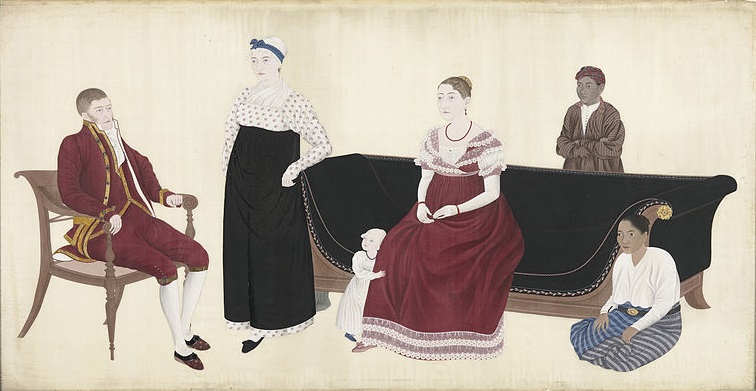
Fig.3. ‘Portrait of the family Cock Blomhoff ‘, 1817. attrib. to Yushi Ishizaki (1768-1846) Rijksmuseum Amsterdam
The painting ‘Portrait of the family Cock Blomhoff ‘ (Fig.3.) depicts the Cock Blomhoff family with servants with from left to right, Jan Cock Blomhoff, sitting in the chair. Standing next to him beside the canapé: a European governess. Sitting on the canapé: Titia Cock Blomhoff, née Bergsma, wife of Jan Cock Blomhoff. At her side, their infant son Johannes and to the right two Javanese servants.
The piece was purchased by the Rijksmuseum in December 2008 for Euro 300.000,-. The size of the painting is Height: 95.7 cm (37.7 in). Width: 173.3 cm (68.2 in).
The print (Fig. 2) is still available in our gallery! You can contact us here for more info!
You can click HERE for more Deshima sensuality….!
Source: ‘The Dutch in Ngasaki – 19th-century Japanese prints‘ by Willem van Gulik


